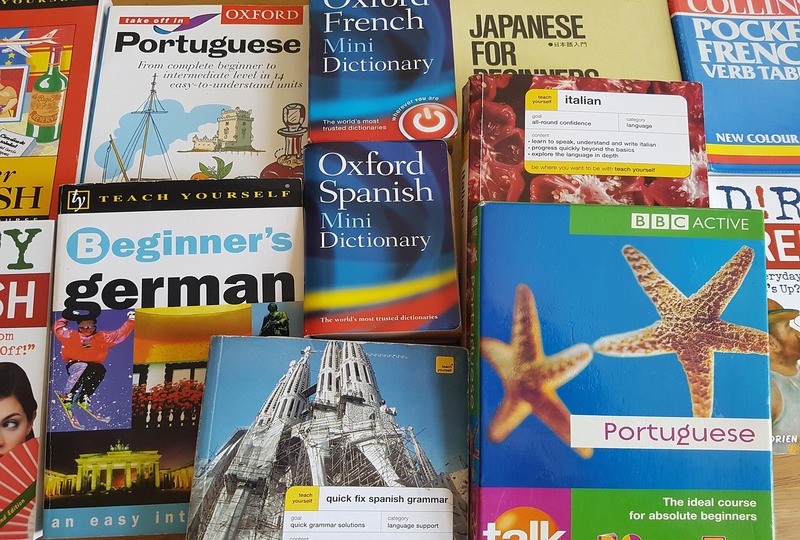
The Freelance Translator’s Goldmine: How to Turn Your Language Skills into a Thriving Business
The global economy has reached unprecedented levels of interconnectedness, giving rise to a substantial demand for skilled translators who can bridge linguistic divides. If you possess exceptional language skills, embarking on a freelance translation career can be both rewarding and financially lucrative. However, achieving success in this competitive field involves much more than mere fluency in various languages. It requires a keen understanding of business dynamics, innovative marketing strategies, and specialized knowledge in particular industries or topics to stand out from the crowd. In this detailed guide, we will explore practical methods to leverage your language skills and turn them into a successful freelance translation business, opening up fresh opportunities and letting your abilities stand out in a dynamic global marketplace.
Step 1: Define Your Niche and Specialization
Not every translator has the same abilities or knowledge. Identifying and honing in on your unique niche can empower you to command higher rates while attracting clients who value quality. Consider exploring various specialized fields, such as literary translation, technical documents, marketing materials, or medical texts. Each of these areas offers distinct opportunities to showcase your talents and deliver exceptional value to discerning clients.
- Legal Translation: Requires familiarity with legal terminology and the document structures.
- Medical Translation: Involves translating medical records, research papers, and patient information.
- Technical Translation: Covers user manuals, engineering documents, and software localization.
- Literary Translation: Focuses on books, scripts, and creative works.
- Business & Marketing Translation: Involves translating websites, advertisements, and branding materials.
Selecting a specific niche allows you to showcase your expertise and market your services more effectively.
Step 2: Build Your Skills and Credentials

Being proficient in multiple languages is a valuable skill, but transitioning into professional translation requires a distinct set of skills and knowledge. To boost your qualifications in this intricate field, think about the following measures to improve and strengthen your credentials:
- Get Certified: Certifications like ATA (American Translators Association) or CIOL (Chartered Institute of Linguists) can boost credibility.
- Take Specialized Courses: Platforms like Coursera, Udemy, and ProZ offer translation courses tailored to different industries.
- Improve Writing Skills: A skilled translator must have strong writing skills in the target language they are translating into.
- Use Translation Software: Learn about CAT (Computer-Assisted Translation) tools such as SDL Trados, MemoQ, and Smartcat to improve both accuracy and efficiency.
Step 3: Set Up Your Freelance Business

Freelancing is akin to launching your enterprise, where you become the architect of your professional journey. It provides the opportunity to select your projects, establish your timetable, and engage in work that you love. Here's a comprehensive guide to getting started on this rewarding adventure:
1. Create an Online Presence
Having an online presence is essential for attracting potential clients. It provides an opportunity for them to explore and interact with your offerings. Begin by concentrating on these key areas:
- A professional website showcasing your portfolio, services, and client testimonials.
- An active LinkedIn profile optimized for translation work.
- A presence on translation platforms such as Upwork, Fiverr, and ProZ.
2. Establish Your Pricing
Pricing can present challenges for freelancers. It is important to take into account the following factors:
- Per-word rate: Common in the industry (e.g., $0.05 - $0.20 per word depending on specialization).
- Hourly rate: Used for consultation or editing work.
- Project-based pricing: Ideal for large, complex projects.
To ensure competitive pricing, it's essential to examine industry standards and adjust prices according to experience levels and market demand. In a constantly changing market, this approach helps to maintain relevance and profitability.
3. Set Up Legal & Financial Aspects
- Ensure you register your business if local regulations mandate it.
- Establish a dedicated bank account for your freelance income.
- Use invoicing tools like Wave, QuickBooks, or PayPal for smooth transactions.
Step 4: Find Clients and Market Your Services
Attracting clients is a significant challenge that many freelancers face. To effectively market yourself, consider implementing these strategies:
1. Join Translation Platforms
Sign up on freelance websites like:
- ProZ (specialized for translators)
- Upwork (for freelancers across industries)
- Fiverr (for beginner translators looking for gigs)
- PeoplePerHour (a mix of short- and long-term projects)
2. Network and Build Relationships
- Connect with other translators and potential clients on LinkedIn.
- Join translator associations like ATA or ITI.
- Participate in industry events and online seminars to connect with prospective clients.
3. Use Cold Pitching and Direct Outreach
Reaching out to businesses, publishers, or legal firms through cold emailing can open the door to lucrative client opportunities. To make a lasting impression, tailor your pitch for each client, highlighting your skills in a way that demonstrates the benefits of your services. Personalizing your approach not only grabs attention but also forms a bond, allowing prospective clients to better imagine the value you can offer their organization.
4. Leverage Content Marketing
Creating a blog, YouTube channel, or social media presence focused on translation tips, industry trends, and case studies can be an effective way to establish your authority in the field. Consistently sharing valuable insights and knowledge not only positions you as a knowledgeable resource but also attracts potential clients seeking expertise in translation services. This approach can significantly enhance your visibility and credibility within the industry.
Step 5: Manage and Scale Your Business
Once you have a steady flow of clients, focus on scaling your business.
- Streamline Workflow: Use project management tools like Trello or Asana.
- Automate Tasks: Use invoicing and scheduling software.
- Build a Team: Hire subcontractors or collaborate with other translators to take on larger projects.
- Expand Your Services: Offer additional services like transcription, proofreading, and localization consulting.
Summary
Success as a freelance translator requires more than just language fluency; it also demands business acumen, strategic marketing, and a commitment to continuous learning. Identifying a specific niche, honing your skills, building a strong online presence, and successfully marketing your services are crucial steps to turning translation into a profitable and sustainable career.
Ready to turn your language skills into a thriving freelance business? Partner with Digital-Trans Asia to kickstart your translation career! Join our team of expert translators and localization specialists to work on exciting projects from anywhere. Visit our careers page or contact us today to unlock your potential in the global translation market!